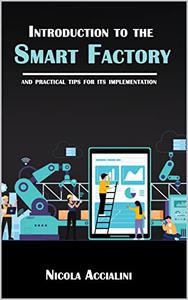
Introduction to the Smart Factory: practical tips for its implementation by Nicola Accialini
English | 2021 | ISBN: N/A | ASIN: B08X79GJC6 | 105 pages | EPUB | 0.14 Mb
The Smart Factory can be defined as a factory designed on the basis of the following characteristics:is able to facilitate the launch of new products based on market dynamics,is scalable to meet the changing demand for existing products andhas real-time analytics to minimize downtime and improve management.
The objective of the Smart Factory is to improve the competitiveness of companies thanks to the aid of the new technologies of Industry 4.0 by increasing the level of automation, autonomy and flexibility of the production system.
The book is divided into 8 chapters:
1. Reconfigurable Manufacturing Systems: automation is not enough. We will analyze how production systems have evolved over time to enable ever greater flexibility today
2. The key technologies: the main technologies of Industry 4.0 and some of their industrial applications will be presented
3. Lean Production and Industry 4.0: it will be shown how Industry 4.0 integrates perfectly with Lean methodologies: indeed, they amplify each other's benefits
4. Design the Smart Factory: a 10-step approach will be briefly described
5. Management skills required: some key management aspects within a Smart Factory will be presented. In fact, Technology, if not properly managed, could bring more problems than benefits
6. Risks and associated challenges: the implementation of a Smart Factory entails a series of risks which, if not properly considered and managed, can lead to the failure of the project
7. Examples of Smart Factories: some examples of cuttingedge factories and concrete applications will be presented
8. Practical tips: some suggestions coming from the application of the recommended steps in chapter 4 will be discussed briefly.
This book is aimed at all professionals, in particular at production managers and engineers who work in manufacturing companies and who want to get some ideas and start with a concrete approach a path of implementation of a Smart Factory. In this sense it is important to underline that the barriers are more cultural than technological. Technology exists and is already available at all levels: what is lacking is a medium-long term vision and the will to undertake a path, certainly complex, which however can bring important competitive advantages, especially in the globalized labor market.



